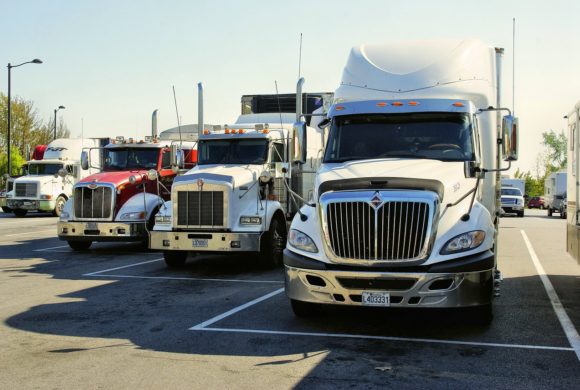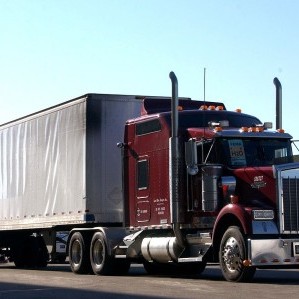
by Queener Law | Jan 16, 2018 | Colorado, Kentucky, Tennessee, Trucking Accident
Following an increase in truck accident fatalities over the past seven years, survivors and safety advocates are urging the Federal Motor Carrier Safety Administration to finalize multiple safety regulations that have been placed on hold. Truck Safety Coalition members attended the nomination hearing of the new administrator of the FMCSA in Oct. 2017. They wanted to draw attention to the importance of a number of safety regulations in the hope that the FMCSA would finalize the rules and begin enforcing them. However, the anti-regulatory environment makes it less likely that the rules will be finalized in the next few years.
Safety Rules at Issue
Despite the push by lobbyists for another delay, the electronic logging device mandate went into effect on Dec. 18 as scheduled. Trucks must now have electronic logging devices installed that track when the trucks are moving. It is thought that the ELD mandate may prevent truck drivers from falsifying their logbooks to get around hours-of-service rules.
Other regulations have not been finalized or implemented, however. A proposed sleep apnea rule that would have required screening for sleep apnea that is similar to what is required of pilots was withdrawn by the FMCSA. Sleep apnea interferes with sleep patterns, causing people who suffer from the condition to feel fatigued. The sleep apnea rule was meant to reduce drowsy and fatigued driving by truck drivers.
Advocates have also been calling for an enhancement in driver training rules to require more hours behind the wheel. The proposed rule that would have required trucks weighing more than 26,000 pounds to have speed limiting devices installed has also not been finalized. The Trump administration is still considering it, and it is uncertain whether or not it will be enacted.
Truck Accident Increases
Truck accidents have increased over the last seven years. In 2016, there were 4.317 people who were killed in accidents involving large trucks. Many of these accidents were caused by some of the issues that the proposed regulations would address. Despite this, it is unlikely that the FMCSA will act to prioritize safety because of the anti-regulatory push in the administration.

by Queener Law | Dec 18, 2017 | Tennessee, Trucking Accident
Advanced safety technology in large trucks may greatly reduce the number of truck accidents in Tennessee and elsewhere, according to a new report. The AAA Foundation for Traffic Safety found that 63,000 truck accidents could be prevented each year if trucking companies installed safety technologies on all of the trucks in their fleets. The organization reviewed data about lane-departure warning systems, automatic braking systems, video safety systems and air disc brakes and recommended that companies install all of them.
Effects of Safety Technology
The AAA Foundation for Traffic Safety reviewed the literature of truck accidents and the data about various types of safety technology. They found that the installation of lane-departure warning systems in all of the trucks in the U.S. could save 115 lives, prevent 1,342 injuries and result in 6,372 fewer crashes each year. Onboard video safety systems would prevent 17,333 injuries, save 293 lives and prevent as many as 63,000 truck accidents annually.
The foundation also found that automatic brake systems could save 55 lives and prevent 5,294 accidents and 2,753 injuries. Finally, air disc brake installations could save 37 lives while preventing 2,411 accidents and 1,447 injuries. The foundation recommends that these systems be installed on all trucks to help to prevent truck accidents that cause severe injuries and death.
Why Aren’t the Systems Used More Often?
These technologies are relatively new and are treated as options instead of as standard equipment on new trucks. Some carriers choose to purchase trucks without these options to save money. In addition, many carriers have fleets of trucks that are older. They argue that the cost of retrofitting their fleets would be prohibitive. There are no current regulations that require that manufacturers include these systems on new vehicles or that companies install them on their existing fleets.
Despite the initial cost outlays, companies could derive several benefits by installing advanced safety technology in their fleets. They could help to prevent accidents, deaths, and injuries. The installation of safety technology could also save substantial amounts of money over the long term by reducing the number of claims and payouts. When truck accidents happen, a truck wreck attorney may represent injured victims to help them to recover damages from the trucking companies and drivers for their losses

by Queener Law | Nov 21, 2017 | Tennessee, Trucking Accident
In Tennessee, commercial truck drivers work long hours and may be distracted by many things beyond their cell phones. Truck drivers should avoid distractions while they are driving so that others who are traveling nearby will be safer. In addition to cell phones, drivers may be distracted by others who are traveling with them, eating, dispatch equipment, billboards, people outside of their trucks and more. By understanding the potential for and danger of distraction, drivers may be better able to focus their attention on the road and minimize their risks of causing accidents. A semi-truck accident lawyer may help victims who have been injured in crashes caused by distracted truck drivers.
Distractions to Avoid
According to the Federal Motor Carrier Safety Administration, 71 percent of crashes involving large trucks that were caused by truck drivers happened when they were engaged in other activities besides driving. By remaining focused on the roads, truck drivers can help reduce the risk of accidents. While cellphones are responsible for a large percentage of distracted driving accidents, a number of other activities are also distracting to truck drivers and should be avoided.
One of the leading causes of large truck crashes is driver inattention that results from distractions outside of trucks. These can include billboards, people, buildings and others. In 2006, a study found that as many as 80 percent of large truck crashes involved truck drivers who were inattentive within 3 seconds of the accidents.
Texting while driving is notoriously distracting, and it is illegal for commercial truck drivers. When people text and drive, their manual, cognitive and visual attention are all directed away from the road. Drivers should likewise not use their dispatching devices while they are driving. Instead, they should pull off of the road when they need to use these tools.
Some activities that might seem innocuous, like eating or drinking, are also highly distracting to truck drivers. One recent study found that driving while eating might be even more dangerous than driving while talking on a cell phone. It is better for drivers to wait and eat on their breaks.
Driver distraction is a huge problem that can lead to preventable accidents. A semi-truck accident lawyer may gather evidence that shows driver distraction caused truck accidents.

by Queener Law | Oct 19, 2017 | Tennessee, Trucking Accident
Of the many potential causes of truck accidents in Tennessee, regulatory violations are some of the most frequently occurring. The Federal Motor Carrier Safety Administration has strict regulations in place that are geared toward reducing the risk of trucking collisions, but many drivers and carriers violate the rules in an effort to get their loads to their destinations in time. When a truck collision results from a trucking violation, a truck wreck attorney may argue a prima facie negligence claim against the responsible drivers and their employers.
Common Trucking Industry Violations
The FMCSA has established multiple rules that are meant to reduce the risk of trucking accidents. When large trucks cause collisions, victims are much likelier to suffer devastating injuries or fatalities. As a result, the industry is strictly regulated.
Drivers are only supposed to drive a certain number of hours per day, and they are supposed to take a minimum number of required breaks. There are also regulations concerning what the drivers are allowed to do while they are driving and rules about the frequency of maintenance and inspections of the trucks.
Under the law, drivers are only supposed to drive for 11 hours out of 14 with three extra hours designated for other activities, including eating, refueling, and others. They are also supposed to get a minimum of 10 hours off for rest before beginning new shifts. When drivers violate these hours of service rules, they may be fatigued. This heightens the risk of accidents caused by tired truck drivers.
The FMCSA also prohibits truck drivers from using their hands to make phone calls or to text while they are driving. Drivers who are caught texting, reading texts or talking on the phone while driving face substantial fines. They are allowed to talk on hands-free devices, however.
Truck companies are supposed to conduct regular inspections of their fleets. They are also supposed to follow regular maintenance schedules and to make prompt repairs. Drivers who pull over to have their required inspections will be fined if there are violations that are discovered. Road-side inspections involve looking at the brakes, load securement, exhaust system, lights, and tires. The inspectors also review the drivers’ licenses, logbooks, and paperwork to ensure that drivers and their vehicles are in compliance with the law.
Adhering to safety regulations is important for preventing accidents and saving lives. Violating the rules may cause serious accidents, harming others.

by Queener Law | Sep 19, 2017 | Colorado, Kentucky, Tennessee, Trucking Accident
While many truck accidents are caused by driver mistakes, some result because of defective parts on vehicles. According to the Federal Motor Carrier Safety Administration, almost 30 percent of accidents involving large trucks happen because of part failures. Identifying the parties who are responsible in cases involving defective components can be complicated. Victims may need to get help from expert witnesses who can demonstrate the link between the failed part and the accident’s cause. A truck accident lawyer may work with experts and investigators to help to prove liability and causation.
Common Truck Component Defects
There are a number of different defects that can lead to serious truck collisions. The FMCSA reports that brake failures are one of the leading causes of accidents related to defective parts. Other component defects that may lead to accidents include lighting problems, door and hood failures, wheel defects, engine or transmission failures and attachment system failures. Any of these defects may lead to serious accidents involving the trucks alone or other vehicles.
Defect Categories
In cases involving defective parts, there are three primary categories of defects. These include design defects, manufacturing defects and maintenance issues. Components that have design defects are parts that have problems in their initial designs, causing them to not function as intended. Parts that have manufacturing defects are made incorrectly, causing them to fail. Poorly maintained parts can also lead to failures and accidents. Companies are supposed to routinely inspect and maintain their trucks. When they fail to do so, the companies may be liable for resulting lawsuits. Some companies contract out their repair and maintenance work to third-party contractors. In those cases, the third-party repair and maintenance companies may be named as the defendants in resulting lawsuits.
Damages
People who are seriously injured in truck accidents may suffer both economic and noneconomic losses. By filing lawsuits against the responsible parties, they may recover compensation for both. The amount of damages that might be available in a case will vary depending on the losses and on what happened. Before agreeing to accept proposed settlements, it is important for people to understand how to correctly value their claims. Determining the potential claim value should include calculations of past and future medical costs, past and future lost earnings, pain and suffering, disfigurement and others. A truck accident lawyer may help to value a claim by calculating damages in the various categories.

by Queener Law | Sep 13, 2017 | Colorado, Kentucky, Tennessee, Trucking Accident
Trucks that are used to transport hazardous materials pose much greater dangers than do other large trucks, including toxic exposures, fires, environmental damage, and explosions. Because of the risks, trucking carriers must carry higher liability insurance coverage on their hazmat trucks. The Federal Motor Carrier Safety Administration regulates the transportation of hazardous materials and it classifies them into nine different categories.
Hazardous Materials Categories
When a truck is transporting a hazardous material, the material and the truck must be properly marked and classified. The FMCSA classifies the materials as explosives, flammable liquids, flammable solids, gases, oxidizers, poisons, radioactive material, corrosives and miscellaneous hazardous materials. By requiring markings on trucks that identify the classes of materials that they are transporting, the FMCSA is trying to make certain that other motorists understand the dangers that the chemicals pose. They also are meant to help first responders and law enforcement officers who respond to truck accidents and spills.
Accident Dangers with Hazmat Trucks
When truck accidents involving trucks that are transporting hazard chemicals happen, spills may occur. The dangers that the chemicals pose to other motorists depend on what they are. Accident victims may suffer chemical burns or thermal burns. They may be injured or killed in explosions, suffer amputations, suffer poisonings or be exposed to cancer-causing agents. In addition, some chemicals that seep into the ground may be radioactive, placing everyone who lives in the area at risk of harm if the chemicals get into the water supply.
Common Hazmat Truck Accident Causes
While accidents may be caused by many different things, there are several common causes of accidents involving trucks carrying hazardous materials. One of the most common problems happens because of improperly securing the material when it is loaded. Loads that are not secured properly may be likelier to spill or to roll away from the truck. If they shift, they may also be likelier to explode. Driver errors are also common causes of hazmat truck accidents. Drivers who turn left too fast, speed, follow other vehicles too closely or drive while they are distracted or impaired place others at risk of accident involvement.
When hazmat accidents happen, the victims may be permanently disabled or disfigured and they may also die. A semi truck accident lawyer represents victims and their families in the recovery of damages from hazmat accidents.






